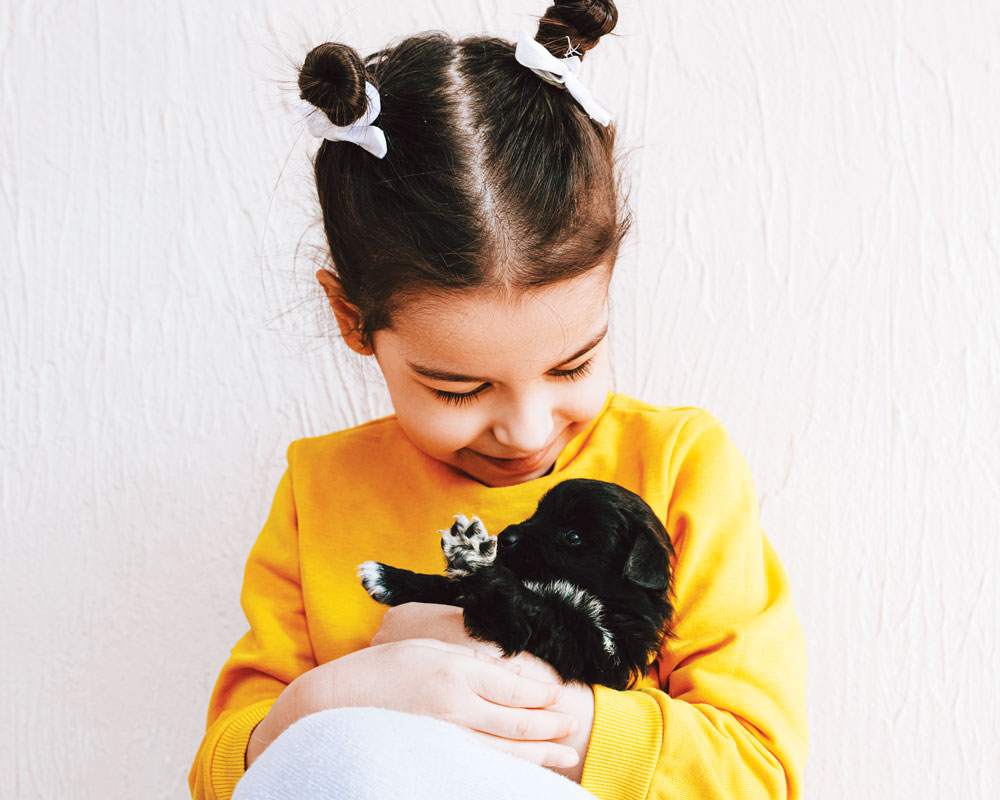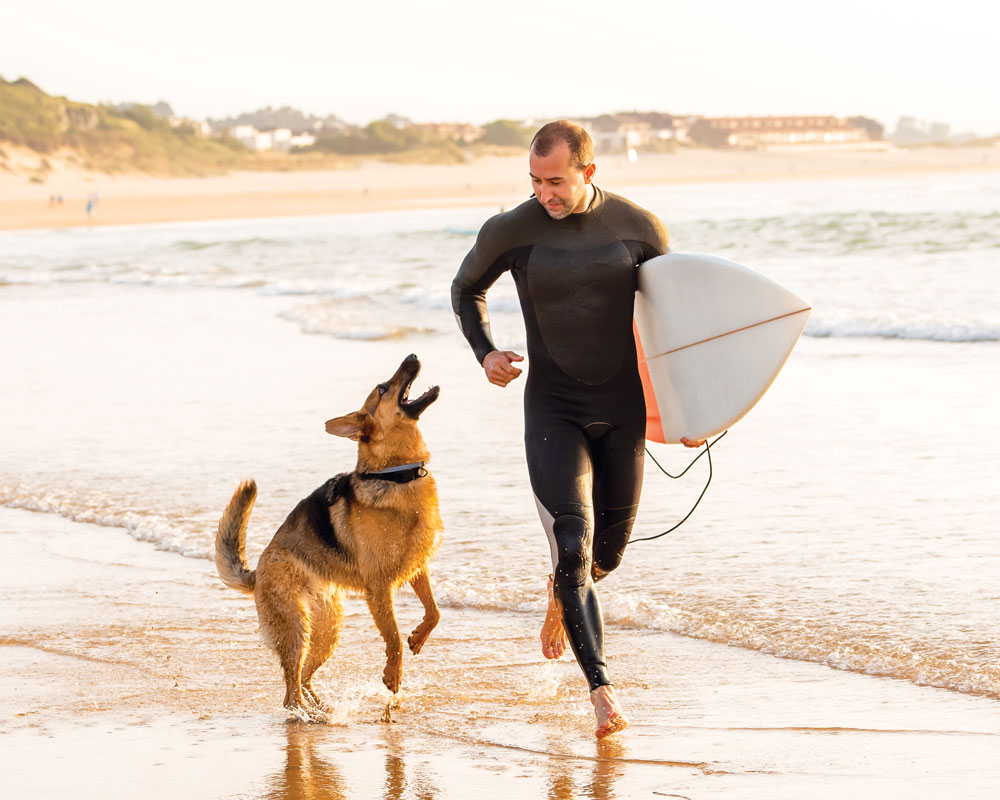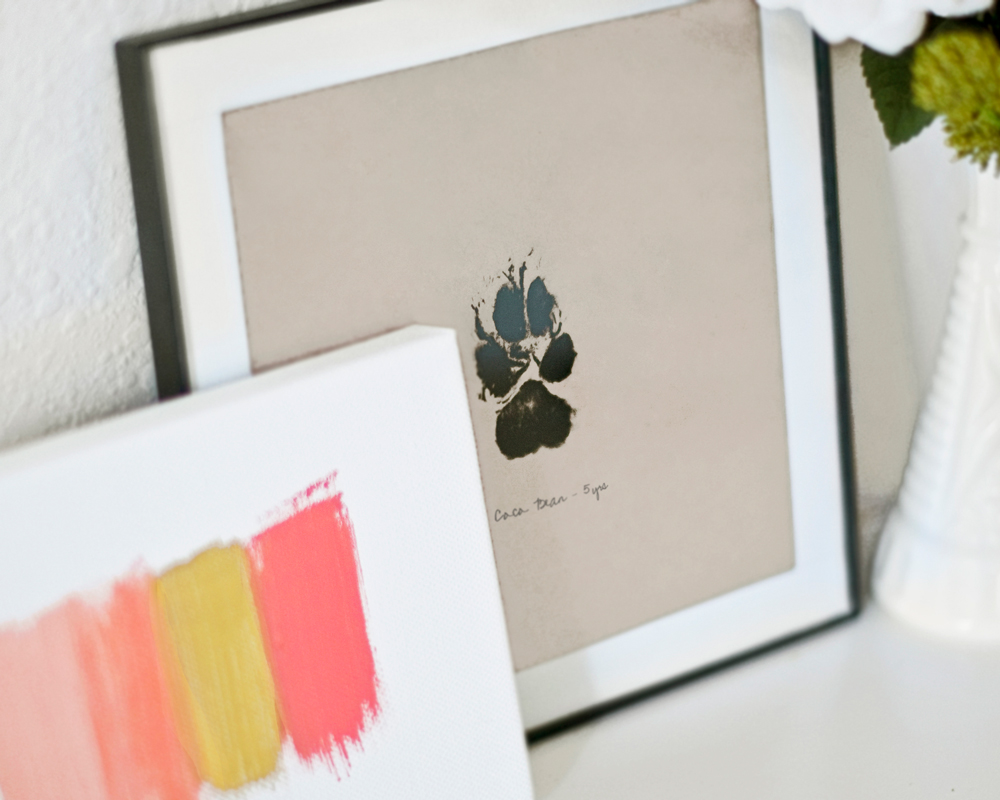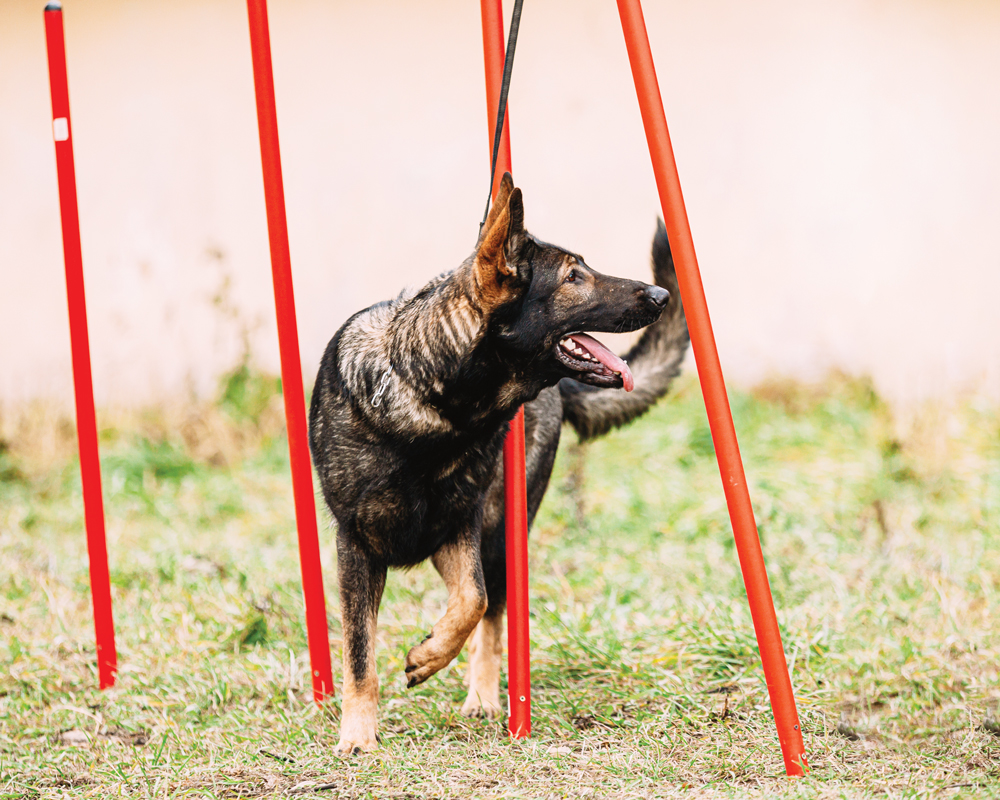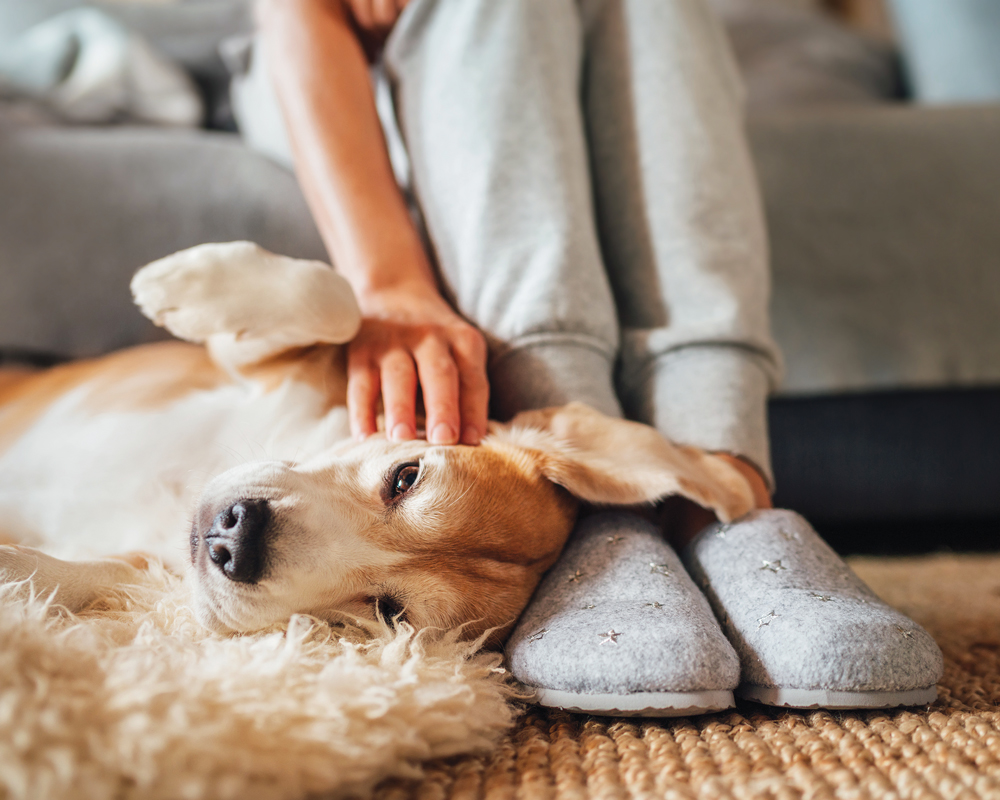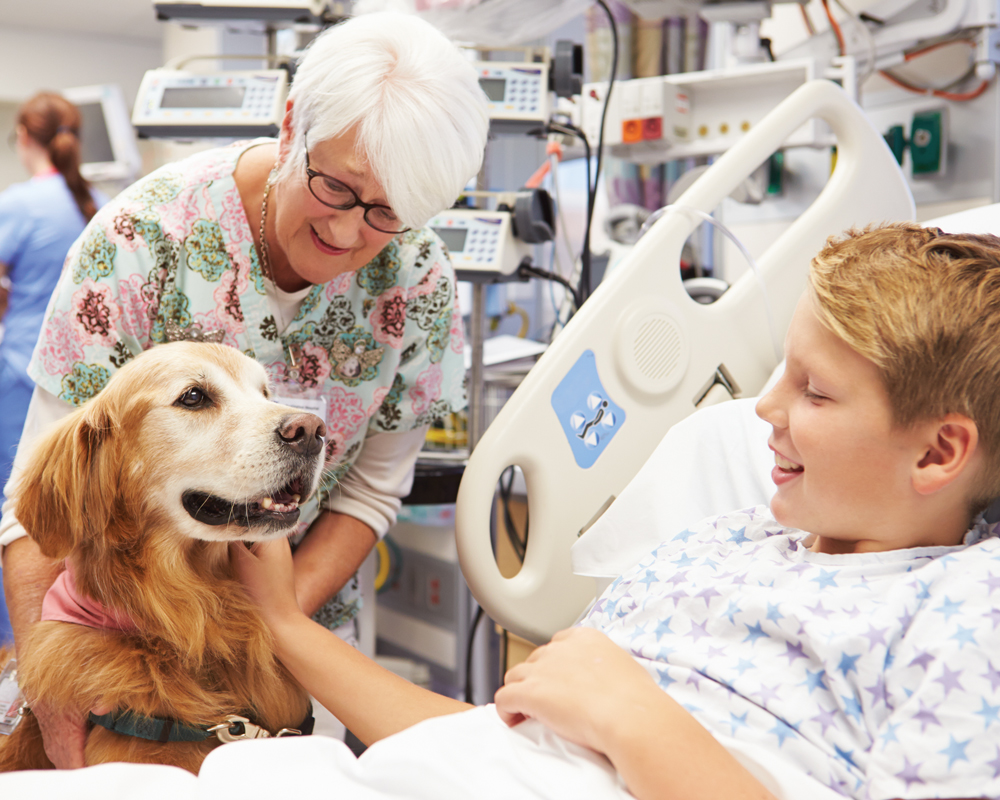

8 Proven Happiness Boosters
These eight ideas will not only improve your mood but your dog’s as well!
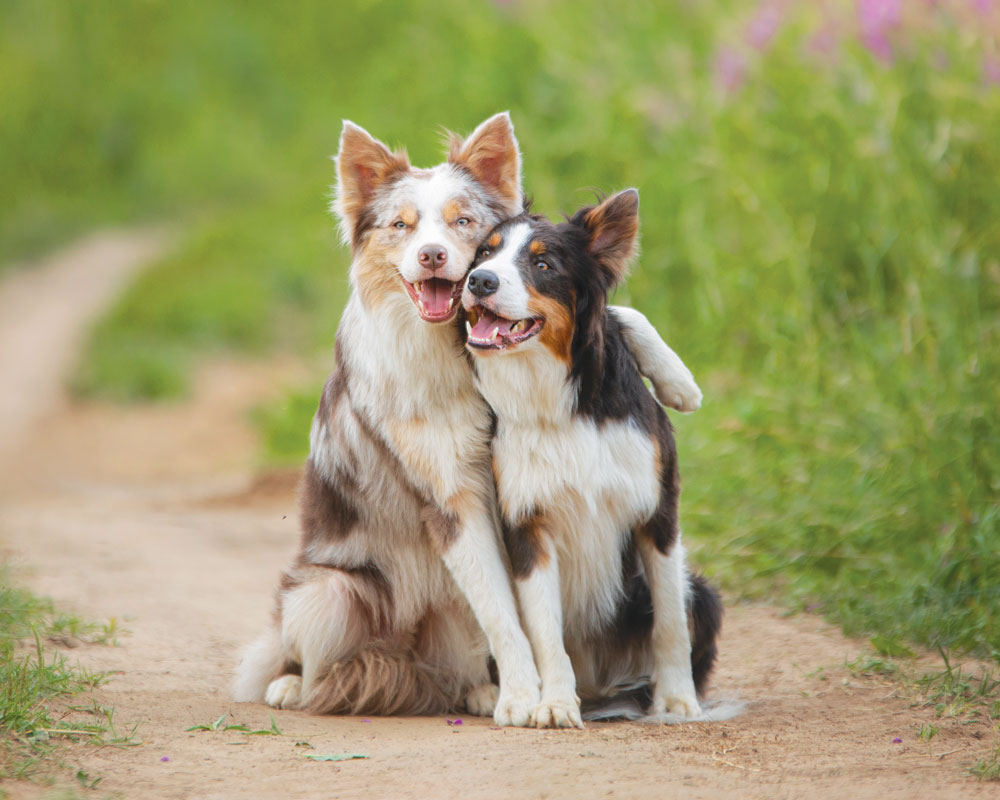
#1 Get out in nature with your dog.
Spending just five minutes in nature can quickly improve your mood—even if it’s just five minutes spent sitting in an urban park, researchers from the University of Regina found after conducting two studies.
“When you need an emotional boost, the fastest and easiest way is to spend a few minutes with nature,” one of the study’s authors, Katherine D. Arbuthnott, told PsyPost.
These studies aren’t the only ones to indicate that getting back to nature can dispel a bad mood and reroute negative thinking. Research undertaken by Harvard University suggests that mood disorders can be lifted by spending more time outdoors. A growing scientific field called ecotherapy shows a strong connection between time spent in nature and reduced stress, anxiety, and depression.
In a 2015 Harvard study, researchers compared the brain activity of healthy people after they walked for 90 minutes in either a natural setting or an urban one. Those who did a nature walk had lower activity in the prefrontal cortex, a brain region that is active during rumination, defined as repetitive thoughts focused on negative emotions.
"When people are depressed or under high levels of stress, this part of the brain malfunctions, and people experience a continuous loop of negative thoughts," says Dr. Straus, director of geriatric psychiatry at Harvard-affiliated Cambridge Health Alliance.
Natural spaces have also been shown to lower blood pressure and levels of the stress hormone cortisol. The beauty of nature also soothes and occupies your mind in a positive way, says Dr. Strauss. "Having something pleasant to focus on like trees and greenery helps distract your mind from negative thinking, so your thoughts become less filled with worry."
#2 Acts of Kindness.
Studies show selfless acts of kindness boost happiness and popularity. An experiment published in PLOS ONE showed that when nine to 11-year-old kids were asked to perform acts of kindness for several weeks, not only did they get happier over time but they became more popular with their peers.
One suggestion: foster a puppy or a dog. Organizations like San Antonio Pets Alive (SAPA) in San Antonio, TX, are continually in need of fosters for puppies and adult dogs alike. SAPA pulls at-risk dogs from the city shelter and places them in foster homes, buying the dogs time until a forever home can be found. Thanks to SAPA’s grassroots network of foster-volunteers, they are able to save death-row dogs daily. Modern Dog’s Jennifer Nosek regularily takes in foster pups. Once they’ve found homes, she’ll foster another couple pups, usually siblings around eight weeks old, until they too can be adopted. (The cuteness!!) Organizations across the U.S. and Canada are in need of temporary foster homes for rescued dogs and puppies—check with your local animal control, shelter or rescue organization to get started.
#3 Get those legs and arms moving.
Get those mood-boosting endorphins pumping! A walk, a hike, a trail run—pick the most strenuous option you and your dog are comfortably capable of and aim to make it a habit. Beware the three-day slump in which your body acclimates to the feel-good boost and tells you don’t need to go anymore. Push through and be rewarded with better mental and physical health.
#4 Find a creative outlet.
A study out of New Zealand had participants track how creative they’d been and their corresponding mood. A clear pattern emerged, suggesting “a particular kind of upward spiral for well-being and creativity,” said Dr. Tamlin Conner, a psychologist at New Zealand’s University of Otago and the study’s lead author. “Engaging in creative behaviour leads to increases in well-being the next day, and this increased well-being is likely to facilitate creative activity on the same day.”
Wondering where to start? We have tons of cool DIYs (leash hooks! No-sew dog beds!) and dog-approved recipes to get you started! Find them here: moderndogmagazine.com/diy-projects
#5 Learn a new skill with your dog.
Research shows that learning new skills improves mental wellbeing by raising self-esteem and boosting self-confidence, increasing sense of purpose, and helping you connect with others. Better yet, involve your dog. Why not set up a backyard DIY agility course or try nose work? Find how-to’s at: moderndogmagazine.com/diyagility and moderndogmagazine.com/nosework Step two, join an agility club or nose work group! Being a part of a community has also been shown to increase happiness.
#6 Pet your dog.
A study undertaken in 2019 at the University of Washington compared the salivary levels of cortisol, a major stress hormone, in students who had interacted with pets to those that had not. The findings suggest that just 10 minutes of petting time can significantly reduce physical stress levels.
#7 Volunteer with your dog.
Yes, there are incredible opportunities to volunteer with your dog, such as youth reading programs and nursing home visits, but it can also be as simple as volunteering to take your elderly neighbour’s dog for a walk or pick up groceries. The positive effects of volunteering are well documented. Research has shown that participating in volunteer activities is significantly predictive of improved mental and physical health, as well as life satisfaction, self-esteem, and happiness. Studies have shown that volunteering helps people who donate their time feel more socially connected, thus warding off loneliness and depression, as well as achieve better physical health, including lower blood pressure and a longer lifespan. A study from Carnegie Mellon University published in Psychology and Aging found that adults over age 50 who volunteered on a regular basis were less likely to develop high blood pressure than non-volunteers.
#8 Choose gratitude.
What we focus on determines our experience. If you direct your attention to gratitude rather than ruminate on the negatives, you can change your life. This doesn’t mean you have to be in denial. It simply means that you try and refocus your attention to the positives wherever possible—like that dog beside you snoozing on the couch, feet twitching ever so slightly, dreaming of rabbits.
Join the newsletter and never miss out on dog content again!
"*" indicates required fields
By clicking the arrow, you agree to our web Terms of Use and Privacy & Cookie Policy. Easy unsubscribe links are provided in every email.
